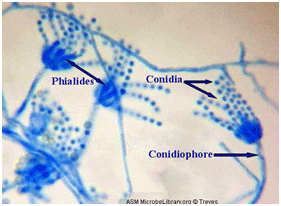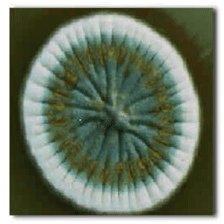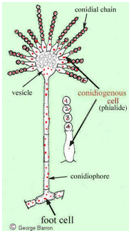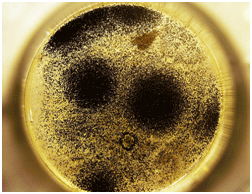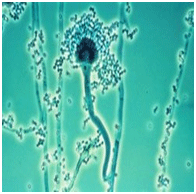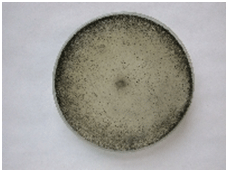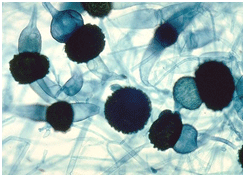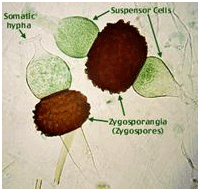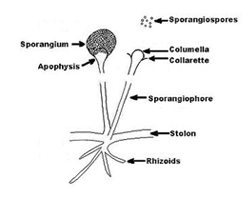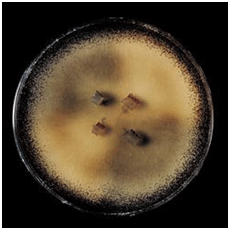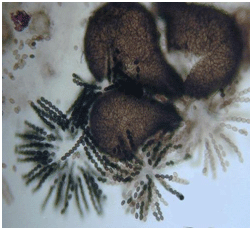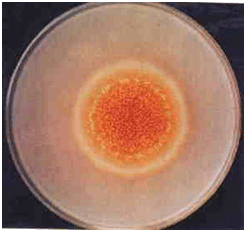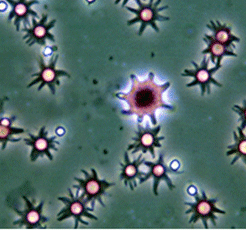- Emericella is very common in tropical and subtropical regions, often isolated from soil, plant and plant material, and food products.
- Emericella is an ascomycete that produces ascospores, as they reproduce sexually with genetic exchange. The anamorphic state is Aspergillus.
- Colony color can vary and can include green, yellow, gray, purple and buff. Colony texture is generally velvety.
- Emericella can cause allergenic and asthmatic reaction in sensitive individuals. It can cause infection in humans and animals particularly in immunocompromised individuals.
|
